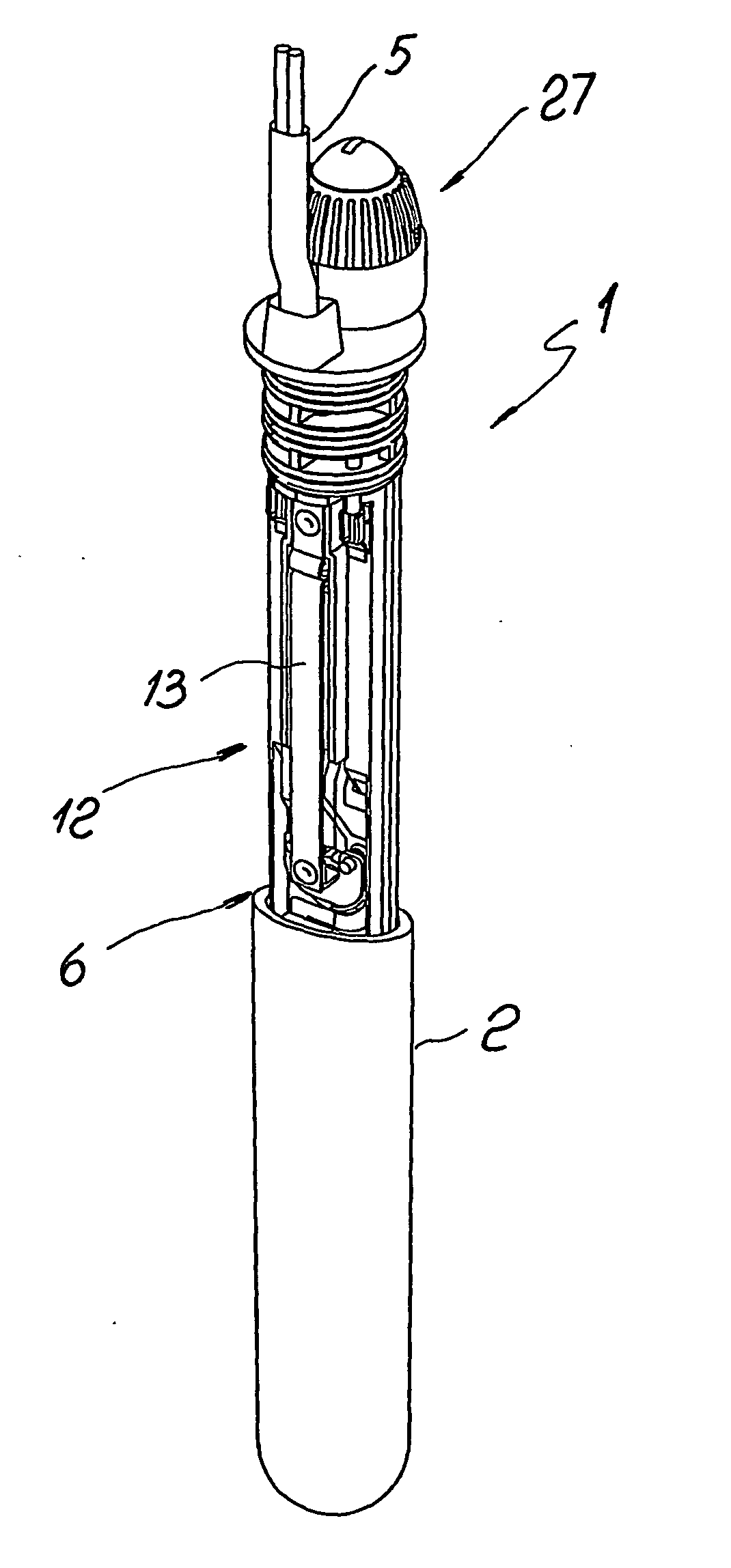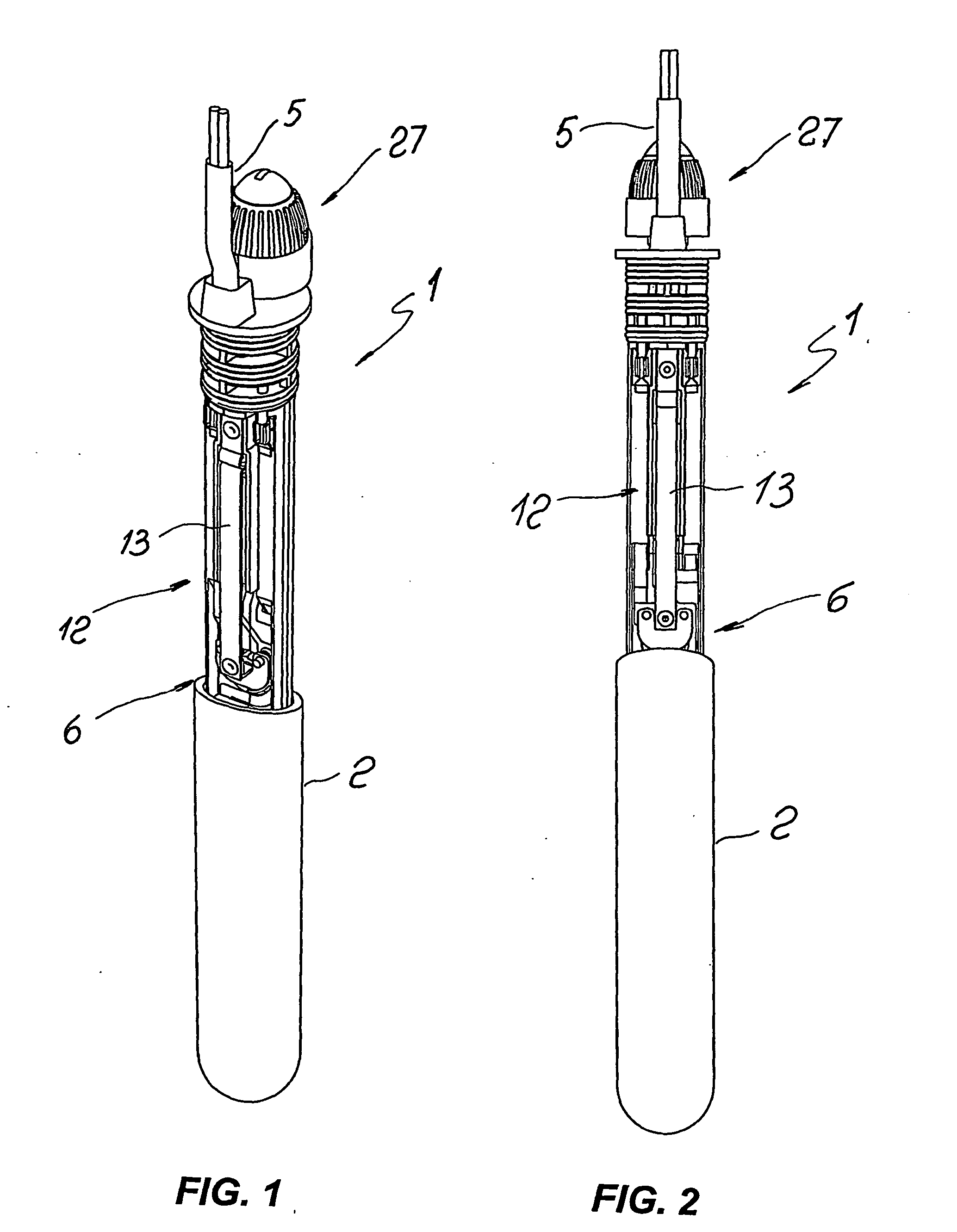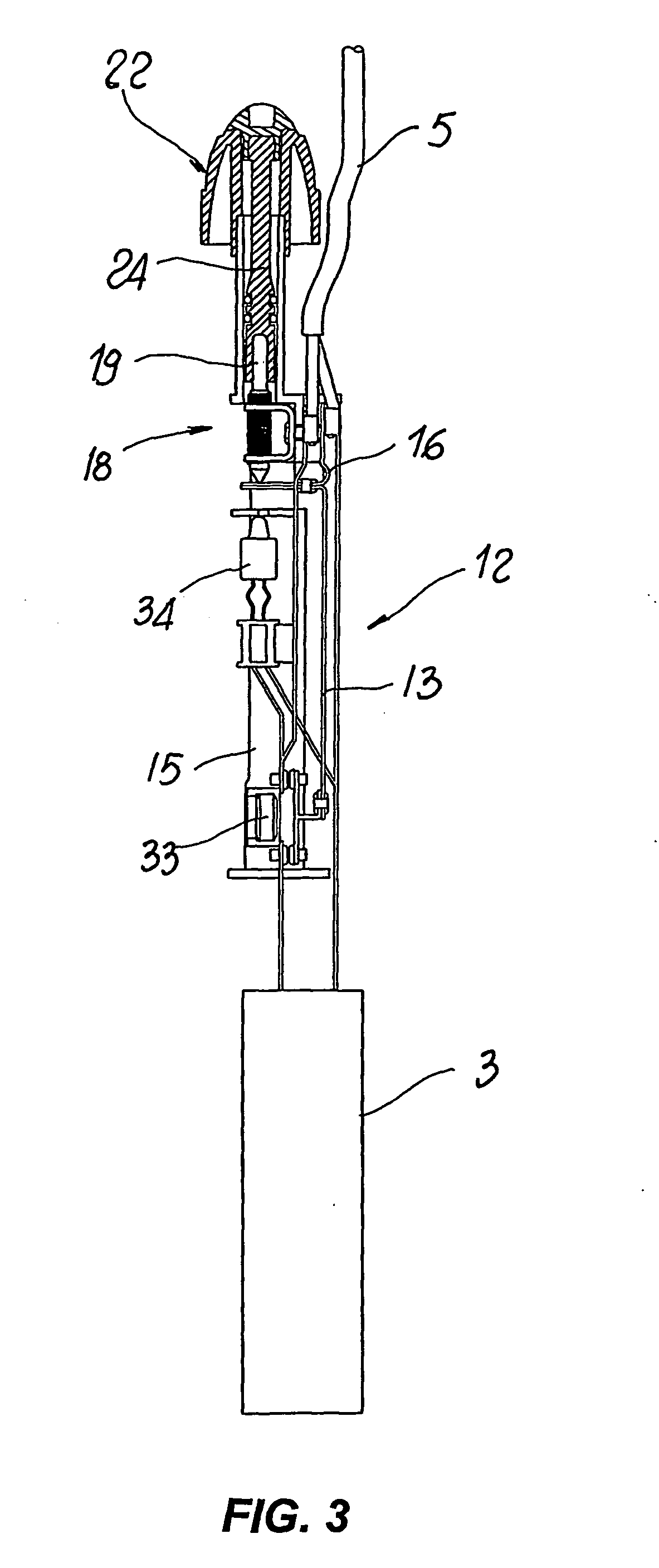Adjustable heater for aquaria
a heater and aquaria technology, applied in the field of adjustable heaters for aquaria, can solve the problems of limiting the application of fish living in aquaria, excessive cost, and temperatures above or below the abovementioned range, and achieve the effects of high efficiency, sensitivity, and accuracy
- Summary
- Abstract
- Description
- Claims
- Application Information
AI Technical Summary
Benefits of technology
Problems solved by technology
Method used
Image
Examples
Embodiment Construction
[0035] With reference to the abovementioned figures, an adjustable heater according to the invention indicated as a whole by reference number 1 comprises a substantially tubular container 2, of preferably transparent material, for example glass, quartz or a similar synthetic material, with one end open, within which a heating element of the electrical type, indicated as a whole by reference number 3, is located.
[0036] Heating element 3 may comprise one or more electrical resistances 4, for example of the wire type wound on a cylindrical support of thermally refractory material, not illustrated in the drawings, located in the lower part of container 2.
[0037] The various resistances 4 of heating element 3 are powered by an external source of electrical power R through a bipolar cable 5. In particular, one of the terminals of resistance 4 is directly connected to a first conductor 5′ of bipolar cable 5, while the other terminal of resistance 4 is connected to second conductor 5″ thro...
PUM
 Login to View More
Login to View More Abstract
Description
Claims
Application Information
 Login to View More
Login to View More - R&D
- Intellectual Property
- Life Sciences
- Materials
- Tech Scout
- Unparalleled Data Quality
- Higher Quality Content
- 60% Fewer Hallucinations
Browse by: Latest US Patents, China's latest patents, Technical Efficacy Thesaurus, Application Domain, Technology Topic, Popular Technical Reports.
© 2025 PatSnap. All rights reserved.Legal|Privacy policy|Modern Slavery Act Transparency Statement|Sitemap|About US| Contact US: help@patsnap.com



